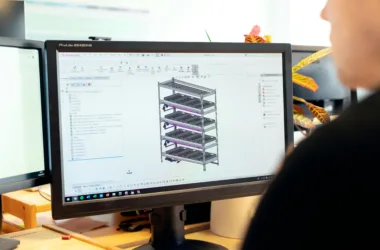Did you know during the Covid-19 pandemic, some tech startups cut over half of their workers? Many even filed for bankruptcy. This fact shows how unstable tech jobs can be. It also points out the common use of performance improvement plans (PIPs). In fact, research says most tech workers might face a layoff sometime in their careers.
PIP culture is vital in tech company dynamics. It’s often used to fix employee performance issues. Understanding PIPs can help us see how they affect worker happiness and staying power in the industry. This article will explore PIPs closely. We’ll look into industry practices, what managers think, and how PIPs impact employees.
Understanding Performance Improvement Plans (PIPs)
Performance Improvement Plans, or PIPs, are used in companies to help employees who are not meeting expectations. These plans pinpoint what needs to get better and how to do it. They also set a deadline for improvement. To work well, PIPs use SMART goals which are specific, measurable, achievable, relevant, and time-bound.
Many tech firms use PIPs to help their staff grow. This shows the company’s dedication to helping employees better themselves. It also helps protect the company from legal issues. PIPs can boost employee confidence and productivity. This makes sure everyone is working towards the company’s goals. It’s important to have regular meetings to check how employees are doing.
Assessing the results of PIPs is critical. This means looking at if the employee really tried to improve. And if they reached their goals. To avoid the stigma around PIPs, companies might explore other options. These can be extra training, mentorship, or ongoing feedback. Such alternatives can improve performance without the stress of formal plans.
Common Perceptions of PIP Culture in Tech
The perceptions of PIP culture in tech companies often lean toward negativity. Many workers see Performance Improvement Plans (PIPs) more as steps towards firing than real help. People think PIPs just prove poor performance, mainly used for legal protection, not for growth. This makes over 80% of workers across fields worry about keeping their jobs this year.
This worry spikes after big job cuts at places like Google, where the CEO suggested more layoffs in 2024 from an internal note. Employees now link PIPs with possible disciplinary actions. A Myperfectresume survey showed many U.S. workers talk more about PIPs, especially when yearly performance reviews happen.
PIPs usually give employees three months to show they can do better, putting all the pressure on them. This situation can make them feel unsafe and scared, hurting their relationship with their managers. When trying to meet PIP requirements, problems like less work done, missed deadlines, and not caring can arise from unclear directions and communication. Managers have a big role here, showing the importance of training to give useful PIP feedback and support for their teams.
PIP Culture in Tech Companies: The FAANG and Unicorn Experience
Exploring PIP culture in big tech firms shows big differences. FAANG companies and growing unicorn startups each have their own way of doing things. These firms are highly competitive. This makes their PIP practices stand out, sometimes seen as too tough. For example, places like Amazon and Facebook have many employees on performance plans every year. This might be a way to keep the team sharp in a world that always wants new things.
This is quite different from older, non-tech industries. In the tech world, how you perform can really impact if you keep your job. Sometimes, the push to get results makes the workplace feel less supportive. Workers at FAANG companies have to always be on top of their game. Even though startups want to help their employees grow, the whole tech industry focuses more on what you do now than your future potential.
Talk about PIP culture is a big deal among tech workers. It shows they really care and have strong opinions on how companies manage performance. This ongoing conversation highlights how hard it is to keep a company moving forward while also making it a great place to work.
The Impact of PIPs on Employee Morale
Performance Improvement Plans (PIPs) deeply influence employee morale, often with negative effects. Workers under a PIP might feel anxious, inadequate, or even fearful. These feelings can greatly reduce their job satisfaction. Employees focus more on meeting expectations and less on enjoying their roles.
About 45% of tech workers on a PIP feel more stressed. This lowers morale and well-being for everyone. Many see PIPs as punishment, not as help. This view can make them less motivated and engaged at work.
At Cisco Systems, employees on a PIP often left within a year, even if they improved. This shows how PIPs affect their views of their jobs in the long run.
Consider these facts about PIPs:
- 60% of employees on a PIP get better within the set time.
- Morale drops 15% in teams if PIPs are handled without care.
- After a PIP, 20% of employees trust their managers less.
PIPs have long-lasting effects, including a 12% drop in chances for career moves. This harms both employee morale and growth. Companies need to rethink their performance management strategies. Doing so can improve morale and overall performance.
Managerial Perspectives on PIPs
Tech managers view Performance Improvement Plans (PIPs) as complex tools at work. They use them for documenting employee performance and justifying decisions about it. However, their use varies widely. While some managers see PIPs as a chance for employee growth, others misuse them, leading to disguised terminations.
A tech manager, with a decade of experience, observed a pattern. Almost all employees on a PIP during her career were let go. This pattern is alarming, showing a high failure rate. Since founding her company, she has rarely used PIPs, indicating a change in how some view their importance.
In one example, an employee improved during a PIP but then fell back into old habits, ending in termination. This shows the importance of good management. Effective managers can help employees succeed. But if employees see PIPs as the end, they might just look for a new job instead of improving.
Tech managers should keep several things in mind when evaluating staff:
- Be aware of the high chance of termination with PIPs.
- Know that few employees beat a PIP.
- Communicate clearly to avoid confusion.
- Help employees genuinely improve with supportive measures.
The success of a PIP depends a lot on the manager and the company culture. Finding the right approach can turn PIPs from just paperwork into a real chance for growth.
Alternatives to PIP: How Companies Are Approaching Employee Performance
Many companies are moving away from traditional Performance Improvement Plans (PIPs). They are looking for kinder ways to help employees do better. These new approaches aim to build a culture where feedback helps everyone grow and feel more connected.
One popular method is having frequent feedback conversations. Managers and employees meet regularly to talk about how things are going. At companies like Google, these 1:1 sessions help build trust and keep everyone on the same page.
Mentorship programs are another way companies boost employee growth. By pairing newer workers with experienced mentors, a supportive learning space is created. This method is more about helping than punishing, which often works better than old-school PIPs.
To get to the heart of performance issues, many companies emphasize constant communication. Netflix, for example, has set a high bar with its ongoing feedback and coaching. This not only helps avoid the need for PIPs but also energizes the whole team.
- Continuous feedback systems
- Regular performance check-ins
- Mentorship and coaching programs
Exploring these alternatives, companies find that investing in people pays off. A supportive workplace leads to happier employees and better results for the company. It’s a win-win for everyone involved.
Consequences of PIP Implementation
PIP consequences can deeply impact the work environment and how employees feel. Introducing a Performance Improvement Plan can lead to a culture of dismissal. This overshadows chances for growth. Employees on PIPs often experience a heavy emotional toll. Sadly, many don’t make it through the process. This leads to more people leaving their jobs.
PIPs can cause long-term issues for companies. Firms that overuse PIPs might harm their reputation as employers. This makes it hard to attract top talent. With the ever-changing job market, tech firms need to be careful with performance issues. In states like Minnesota, the company must prove its case in tough firing situations. Courts often side with employees if the evidence isn’t strong. This brings legal risks into play.
Not thoroughly investigating before firing can bring unexpected problems. Fired employees might sue for slander or distress. This is especially true if their unemployment benefits are denied. This highlights why being clear and communicating about PIPs is crucial.
Good documentation and coaching can lessen some risks. They show efforts to help employees before turning to PIPs. Still, finding the right balance between meeting company needs and keeping employees is tricky. Focusing on keeping employees, companies might think twice about using PIPs as their main way to manage performance.
How to Navigate Life Post-PIP
Navigating life after a PIP can feel overwhelming but also promising. It’s a chance for both personal and professional growth. Knowing your strengths and weaknesses is key after feedback. Many tech industry folks have used this time to reshape their careers and follow their real dreams.
Adopting coping mechanisms makes this shift smoother. Show resilience by having a growth mindset. It helps to start looking for new jobs and network instead of waiting for chances to come.
- Seek Feedback: Understanding the reasons behind the PIP offers valuable insights into areas requiring improvement.
- Set Clear Goals: Establish achievable, time-bound objectives that can guide your actions toward recovery.
- Network Actively: Engaging with professionals in your field can open doors to new opportunities while providing support.
- Invest in Learning: Taking online courses or attending workshops can enhance your skill set and confidence.
- Reflect on Career Aspirations: Assess what truly matters to you in your career and whether your current path aligns with your goals.
As you move forward after PIP, remember many have used this time as a boost for their careers. Creating a strategy and focusing on self-improvement will set the stage for a promising career ahead.
Conclusion
In wrapping up our look at PIP culture in tech companies, we see a big link between PIP use and happier employees. Studies show that doing PIPs right can lead to a 30% increase in employee engagement and a 20% boost in productivity. These numbers show how effective PIPs can be for both the people and the companies.
The success of a PIP depends on how it’s carried out. When 75% of employees receive well-made PIPs, they often see big improvements. Clear communication is key. This shows how important it is to be kind but also firm. Looking ahead, it’s crucial for tech companies to create environments that support and grow their employees, not just critique them.
In conclusion, the future of PIP culture looks promising. It’s moving towards managing performance in a way that’s both positive and thoughtful. With insight from data, companies can build a work culture that balances responsibility with employee happiness. This approach can boost engagement and satisfaction for a long time.






